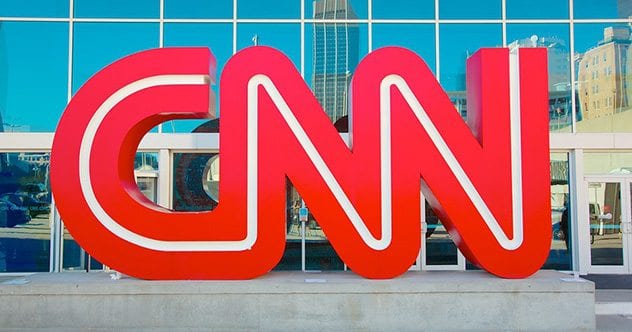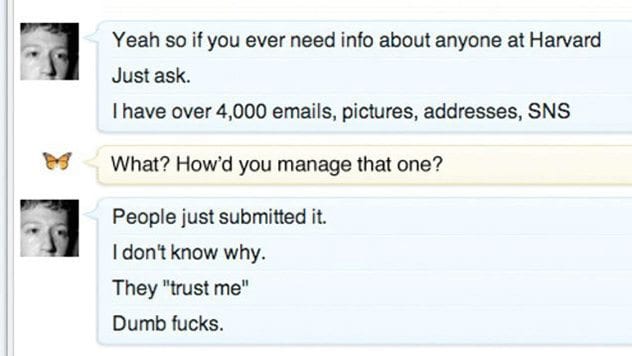Just having freedom of the press, though, doesn’t always mean we have access to the truth. There are more threats to accurate journalism than just the influence of the government. There are a lot of factors affecting the news that gets reported and the way it’s told, and some of them might be dangerously distorting the way we see the world.
10News Is Becoming More Partisan
We’ve gotten used to the fact that most of our news sources lean either left or right. The news has a right to editorialize, and, in theory, as long as we have both sides, it shouldn’t hurt anything. But in practice, partisan news creates bigger issues than you might realize. Facts get reportedly different by partisan news sources, and that affects how we see the world. Left-wing papers like New York Times and Washington Post, for example, have been shown to publish more stories about unemployment when the president is a Republican than when it’s a Democrat, even if unemployment is worse under the Democrat. And we have all seen through the last election how most of the mainstream media (including Cable news) are pushing strongly Democratic talking points (whether they be true or not). On the other side, the Fox News Network was created to air Republican philosophies. The network was created by Republican strategist Roger Ailes, who pitched it as “a plan for putting the GOP on the TV News.” And that affects how you think. One study found that, if you make somebody watch Fox News, they’ll start holding more right-wing opinions and if you make them watch CNN they will hold more left-wing opinions. So watching partisan news really does lock you into one party. And once you’re locked in, you stop seeing your own party’s faults. If you tell an idea to Republicans, one study found, they’re more likely to support it if you say it came from President Trump than if you say it came from John Kerry. And Democrats, according to another study, protest wars far less often when their party is power.
9Facebook Manipulates Your Newsfeed
There’s a reason news is more partisan than it used to be: Facebook. One-third of all Americans and two-thirds of millennials get their news from their Facebook newsfeed. That means that if an article isn’t getting shared on Facebook, one-third of America isn’t going to see it. You might have noticed that nuanced, balanced discussions tend not to show up on your newsfeed. That’s because studies have shown that people are more likely to share posts if they have strong emotions that rally behind a simple cause. The more biased an article is, the more people will read it, and every website knows it. It’s how new “news” sources get big. Entertainment websites, like Vox, Huffington Post, and Buzzfeed News, all got big by getting shares on Facebook. They succeed because they tailor their content to fit Facebook’s algorithm, giving precedence to clicks over truth. It goes a little bit further, though. Facebook actively influences what people see on their site. They hire “news curators” to decide what will be trending on the site, and those news curators aren’t unbiased. They have even admitted to deliberately promoting left-wing content.
8Online News Creates Echo Chambers
When you get all these partisan news sources in your newsfeed, it affects the way you think. Reading articles that support your party creates an echo chamber. It encourages you to think that your party is right about everything and that the other party is full of idiots. Facebook doesn’t view itself as a journalism company. It just views itself as a website. Their goal isn’t to get you accurate information—it’s to get you to spend more time on Facebook, and they know that the best way to get you to do that is to keep you from seeing things you disagree with. Their algorithm pushes articles you like up in your newsfeed and hides ones you don’t like. Facebook has gotten a lot of flack for that lately, but it’s not entirely their fault. We do it ourselves anyway. A study found that, when Facebook shows us everything, people actively avoid articles that don’t fit their political views and seek out articles that tell them what they already believe. The real problem, then, isn’t just the algorithms. It’s choice. Before, we only had a few news sources to choose from, but now, we have thousands. And most people don’t use that power to find the truth. They use it to find someone who agrees with them.
7Traditional News Outlets Are Going Broke
Hardly anyone buys newspapers anymore, and that’s part of a deeper problem than we realize. The most widely-read news sources out there, like the New York Times, Wall Street Journal, and Washington Post, all got their start wholly in print, and the changing media landscape is affecting them. In the last 20 years, a lot of these newspapers have gone done in value. A good number of them are worth less than 10 percent of what they were worth 20 years ago, and that affects what they can do. For one thing, their newsrooms get smaller. These papers have had to lay off 40 percent of their staff in the last 10 years.
5Six Corporations Own 90 Percent Of The News
At this point, 90 percent of all news media outlets you see are owned by 6 corporations: GE, News-Corp, Disney, Viacom, Time Warner, and CBS. And when corporations buy out the news, it leads to some major problems. They aren’t necessarily the problems you imagine. It’s rare that a corporation pulls a story or forces reporters to make changes. Instead, the bigger problem is the focus on profitability. When a corporation owns a news network, the goal becomes to make as much money as possible, which leads to more partisanship, shorter articles, and less accuracy. This isn’t just part of the old world of news. Modern media is influenced by these corporations, as well. GE funds several online sources, too. They’ve sent Vox Media $300 million and Buzzfeed $200 million. The new companies aren’t exempt. These corporations are already tightening their grip.
5For-Profit News Is Less Accurate
When a news source becomes focused on profit, it affects what they do. The pressure is now on getting readers instead of getting facts, and the information they print becomes less accurate. A study conducted during the Iraq War polled asked people where they got their news and then quizzed them on the facts. 78 percent of people who got their news from non-profit news sources like PBS or NPR had their facts straight, but more than 50 percent of all people who read for-profit news had the facts wrong.
4Sensationalized Articles Are More Popular
Another major symptom of focusing on profits is that the news becomes more sensationalized. This isn’t exactly something new; sensationalized news stories are as old as the press itself. In the past, papers would sensationalize articles by focusing on crime and murder. But today, it’s more common to sensationalize politics. A lot of this ties back to Facebook. People are more likely to share articles if they’re sensationalized, and that’s affecting how a whole generation gets their news. It’s been found that millennials naturally pull toward biased and opinionated news sources over neutral ones, which is probably related the fact that 60 percent of them get their news from Facebook. On Facebook, these sensationalized, inaccurate articles just get shared more, so more people see them. Buzzfeed, in fact, has said that “the best way to generate shares on Facebook is to publish sensationalist and often false content.” They meant it as a criticism of other outlets rather than a confession, but it’s safe to say that the most shared website on earth knows it is perhaps the worst culprit (Russian golden showers anyone?) This problem, though, is just inherent in profitability. As one Time Magazine editor said, “Nobody has figured out how to get people to pay for outstanding quality.”
3Fake News Is More Popular Than Real News
These days, we have a new problem: actual fake news. This doesn’t just mean clumsy reporting. It means fake stories credited to newspapers that don’t exist, deliberately created to deceive. During the last US election, fake news stories were shared more often than real ones. These weren’t just simple mistakes; they were fake articles created for the sake of spreading lies, and they exist on both sides. Democrat voters floated a made-up quote of Donald Trump calling Republicans “the dumbest group of voters in the country,” while Republicans floated a fake story about Hilary Clinton having an FBI agent murdered in a house fire. These stories have a lasting psychological effect. Even after this stuff gets called “fake news,” a lot of people still believe them. In an experiment, researchers told a group of people a made-up story and pretended it was true. Once they’d convinced them, they admitted that they’d made it up, but some people clung onto it. Even when the researchers told them it was a lie, some of the participants still insisted that it really happened.
2Real News Reporting Is Filled With Errors
That doesn’t mean that every story in a regular news outlet is 100-percent accurate. A study interviewed people who had firsthand knowledge of a news event to see whether the news told the truth. Of the people surveyed, only 51 percent of them said the news reported the story accurately. It gets worse. 38 percent of all reporters say they believe a colleague has deliberately made up a quote of a story to get a report in. Sometimes, these stories get pretty far. In fact, one made-up story by the Washington Post won the Pulitzer Prize. Most of these errors, though, aren’t so malicious. Instead, they go back to that money problem. Most reporters chalk these errors up to rushes to meet the deadline. That’s especially an issue when it comes to breaking news. Without exception, every major news outlet has printed an error while reporting on a story-in-progress. Sometimes, these problems are huge. After the recent shooting at a mosque in Quebec, the news incorrectly identified Mohamed Belkhadir, one of the survivors, as the shooter. Belkhadir had nearly been killed by a terrorist, and now he was being blamed for it.
1News Stories Have A Limited Lifespan
This all a hot topic right now, but pretty soon, you’re going to be sick of it. You’ll hear enough about fake news and partisan bias that you’ll stop caring, and when you stop caring, people will stop talking about it. Our attention spans don’t last as long as our problems. The University Of Michigan did a study on the cycle of news by looking at how often one newspaper reported on the achievement gap between black and white students. Between 1984 and 1995, there were 11 articles on the topic in total. In 1997, it became a hot-button issue, and the paper published 92 articles on the achievement gap in a single year. By 2001, though, people were sick of it. Throughout the whole year, they only published 2 articles about it. During that whole time, absolutely nothing changed about the issue. The achievement gap was more or less the same throughout. It never got fixed. But the paper stopped reporting it on it anyway because people got bored of it, and so people started to assume that the issue must have been resolved. It’s hardly the only time that’s happened. Many homes in Flint, Michigan, for example, still don’t have clean water, years after it was a hot-button story. The people are having to push an aggressive viral campaign to remind the public it’s still a problem because, otherwise, we’d forget. There’s a good chance that all these problems won’t get fixed anytime soon. But odds are, we’ll forget about this problem, too. Read More: Wordpress
























